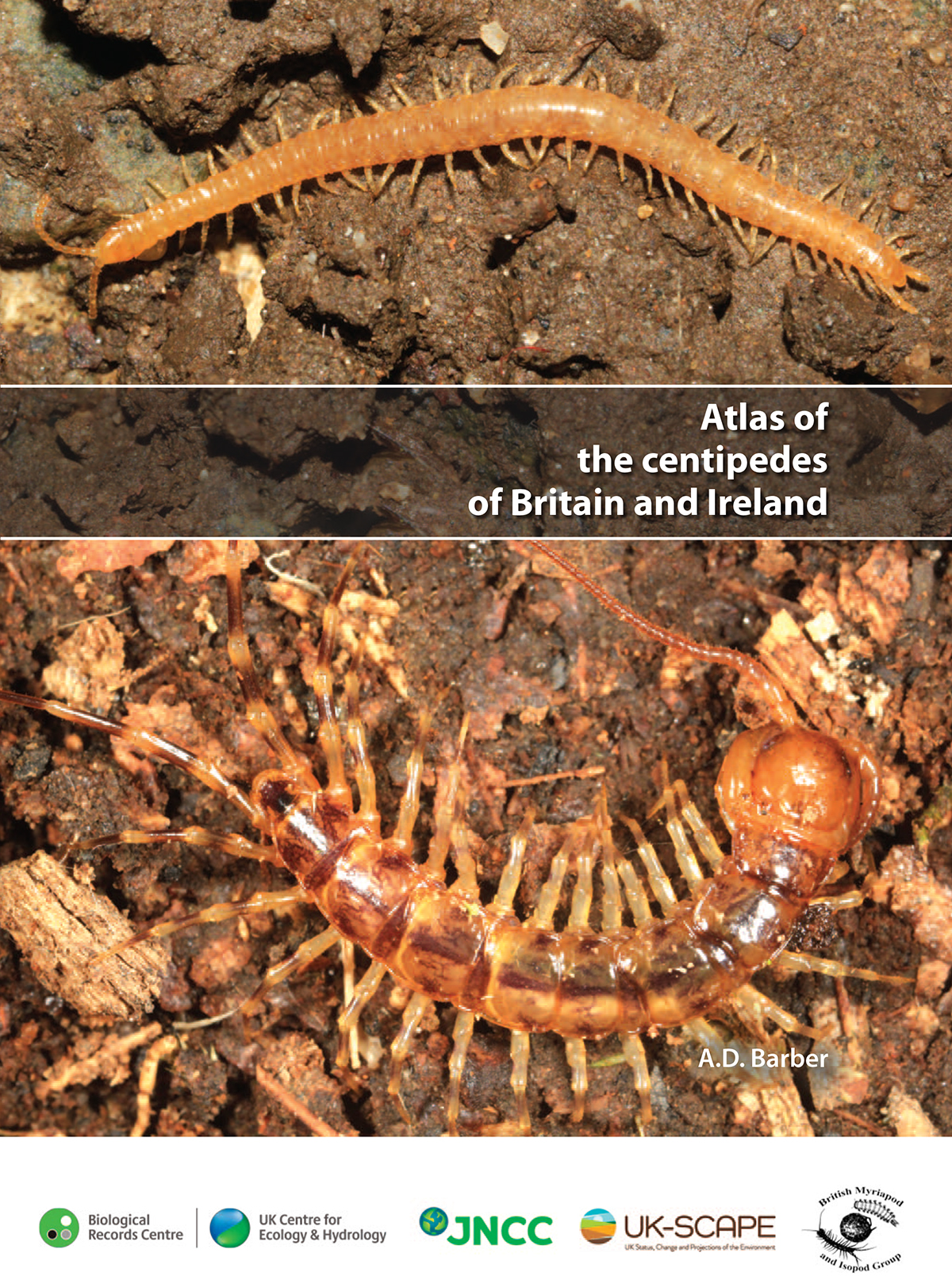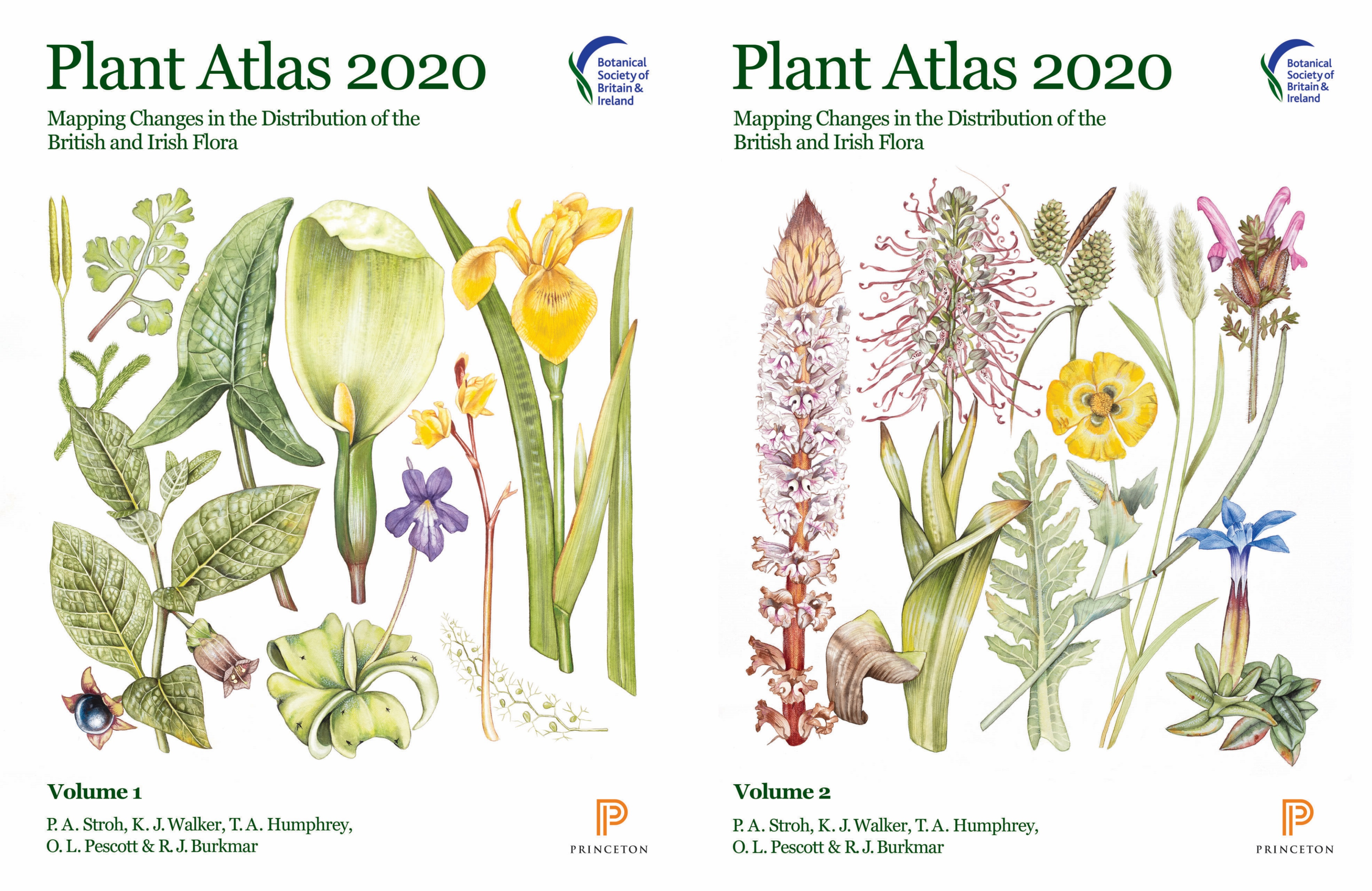It's been a while since our last update and as usual there has been lots of recording scheme activity taking place. Here are some examples of activity over recent months. Thanks to the many volunteers who organise and contribute to recording schemes.
Botanical recording schemes
Botanical Society of Britain and Ireland (BSBI)
The BSBI have just published an incredible new Atlas based on fieldwork carried out by thouasands of botanists from 2000 to 2019 (the Atlas 2020 project). An accompanying Atlas website will feature interactive maps for both native and introduced taxa, and display frequency and distribution at a variety of scales. The two-volume book features introductory chapters that provide a detailed assessment of the changes to the region’s flora over the past hundred years, analysing the drivers of change, such as habitat loss, pollution and climate change.
Distribution maps and accompanying text and graphics display the phenology, altitudinal range, and time-series trends for some 2,700 native, alien, and hybrid species, with even more available on the website.
UKCEH scientists (Oli Pescott, Rich Burkmar, David Roy) working within the BRC have contributed to the analyses, text, design, and coordination of this long- running project. With more than 30 million records gathered during the project, Plant Atlas 2020 will serve as an essential resource for the study and conservation of these wild plants and their vitally important habitats for decades to come.
A series of Atlas 2020 launches were held across Britain and Ireland, and recordings of the many excellent talks given can be found on the BSBIs YouTube channel, including a demonstration of the Atlas 2020 website, and outline of the outputs and main findings and science results, and why the Atlas is important for plants, policy and people. There is lots more information on the BSBI website, and the Atlas 2020 website.
The BSBI’s twelfth New Year Plant Hunt (NYPH 2023) also took place between 31st December 2022 and 3rd January 2023. Volunteers searched for native and non-native wild plants in bloom during a three-hour walk at locations throughout Britain and Ireland, submitting results online via smartphones and other electronic devices. A report of the findings is available here.
British Bryological Society (BBS)
There has been lots of regional bryophyte recording activity over the winter, with some more to come which you can find on the events page of the BBS website. There is a new local bryophyte group for north-west Scotland looking for members, with details here for anyone interested.
2023 will mark 100 years since the BBS was formed as a successor to the Moss Exchange Club, and amongst other activities the BBS will be marking the centenary by holding a photography competition. The BBS website has a growing catalogue of excellent images of bryophytes, to accompany the available species acccounts from the Field Guide, so there may be stiff competition!
Recent work to update the UKSI (see below) for bryophytes means that following the NBN Atlas taking an update from the UKSI in early March, we will soon be able to implement the first import of the BBS database to the NBN Atlas since 2018.
National Plant Monitoring Scheme (NPMS)
The NPMS winter newsletter was packed with helpful information for recorders, and the NPMS recently hosted a webinar on botanical photography by botanist Leif Bersweden who promotes plants by sharing his photos with a wide audience on social media. The NPMS annual report will soon be availbale on the website.
Research investigating how NPMS data may help us to detect climate impacts on plant communities will be published soon, and you can watch a talk by Dr Oli Wilson explaining the work here.
Zoological recording schemes
Centipede Recording Scheme
Reptiles and amphibians
Pollinator Monitoring Scheme (PoMS)
The results of a questionnaire completed last spring by many of our volunteers/participants have been published on the PoMS website. This vital feedback helps us to understand more about the motivations and barriers to participation, so that we can better support volunteers in the future.
Overall, it was fantastic to see that 95% of people agreed that they enjoyed carrying out PoMS surveys, and one comment that sums up the positive feedback we received was that the best thing about participating in PoMS is "taking a break, being in the moment and just noticing the small things".
Overall, this survey has clearly shown the areas in which we are doing well, and where we can do much to improve. In 2023, the PoMS team will work in these areas, and plan to:
- Signpost to species identification resources and recorded talks
- Continue creating blog posts on our website (let us know if you have an idea for a blog post poms@ceh.ac.uk), and supplement this with regular communication through the PoMS mailing list
- Enable activities to be set up for FIT Counts, allowing for local groups and projects to be created
- Provide more immediate feedback on FIT Count results during the year, with modelled, standardised trends following in the first UK PoMS annual report
- Support local projects or events, reaching people who may not already be involved with a wildlife organisation
Read more about the survey here.
General biological recording updates
Updates to the UK Species Inventory (UKSI)
The UKSI is the most comprehensive curated database of UK wildlife taxonomy and nomenclature, forming the foundation of networks such as the NBN Atlas and iRecord. The main purposes of the inventory are:
- To hold standard taxonomic checklists so that records can be made against them
- To allow cross-reference between records made using different checklists, if the same species is known by different names on different lists.
- To provide a framework to help with producing reports on species.
It is maintained by the Natural History Museum (NHM) who work closely with accepted experts in a taxonomic area, who help keep it up-to-date. The BRC have recently completed work, on behalf of the British Bryological Society (BBS), to bring the UKSI fully up to date for bryophytes, in line with the recent UK Census Catalogue (Blockeel et al., 2021) and taxonomic changes published since then. BRC also liaises with other recording schemes and the NHM to do help to do the same for other taxa.

You can find details of over over 100 national recording schemes for different taxa in our directory of recording schemes and societies.
